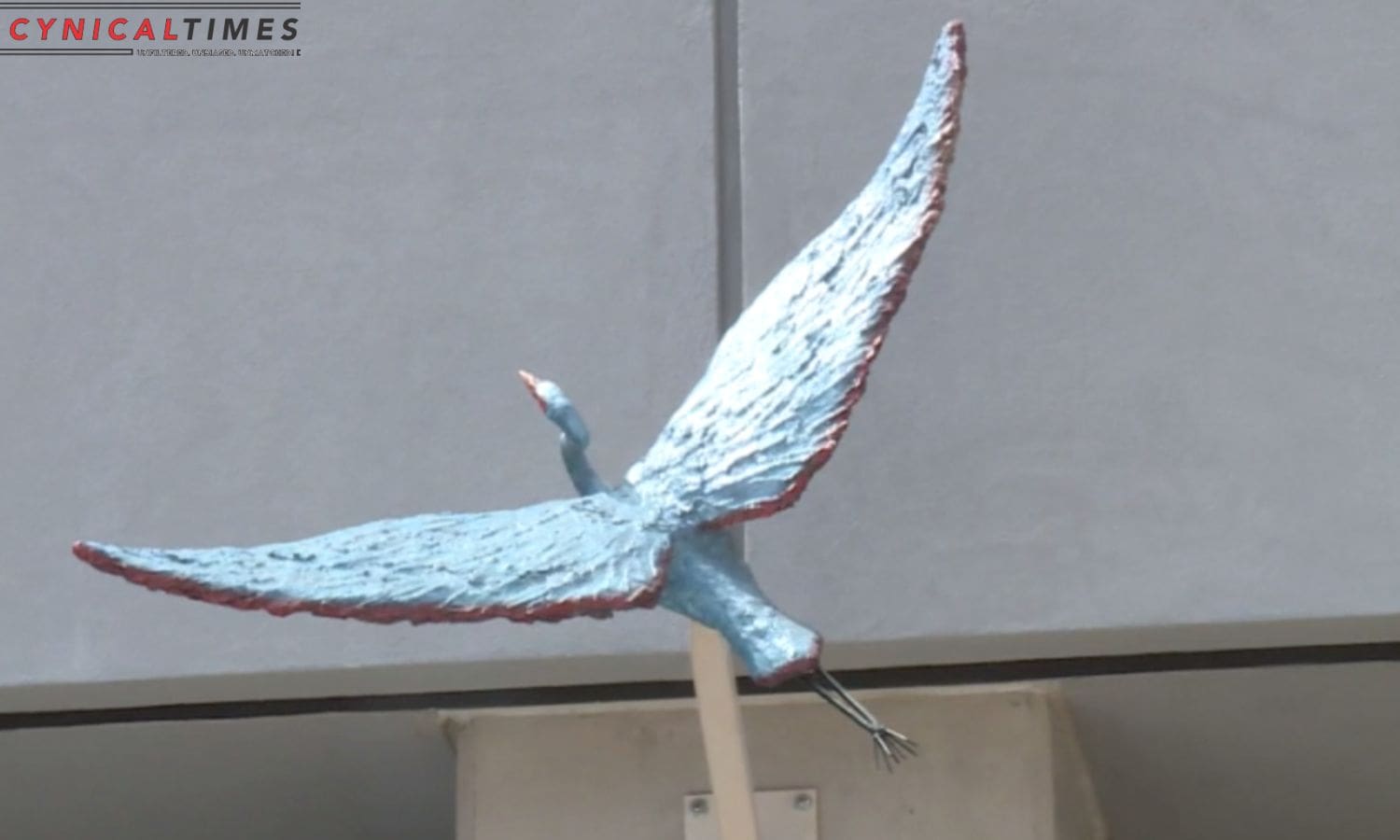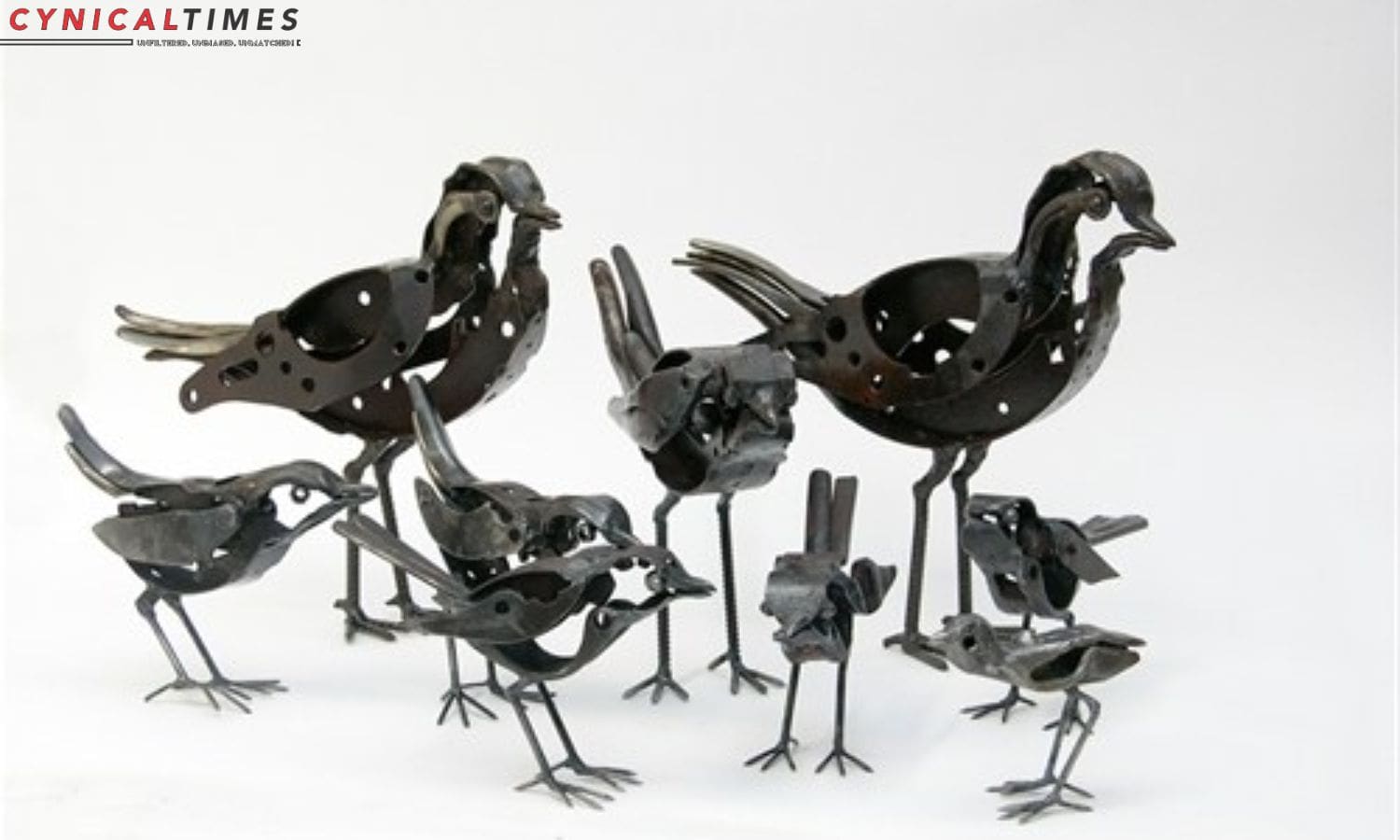Public Art Sculpture Unintended: In the bustling city of Sacramento, an unexpected issue has arisen surrounding a public art sculpture and its unintended consequence on the local bird population. The alarming bird deaths occurring at the Sacramento Light Rail Station, specifically related to the controversial archway known as Esperanza.
With concerns raised by the Wildlife Care Association and the dilemma faced by SacRT, urgent calls for action have ensued. Join us as we analyze this complex situation and explore potential future plans to mitigate the impact on our feathered friends.
Key Takeaways Of Public Art Sculpture Unintended
- Dozens of birds have been found dead at the Sacramento Regional Transit (SacRT) light rail station, prompting an investigation into the causes of these deaths.
- A public art sculpture near the station, known as Esperanza, has been identified as a potential contributing factor to the bird deaths.
- The intricate design of the sculpture attracts birds, leading to trapping or injuries, and the reflective materials cause collisions and severe injuries.
- There is an urgent call for action to modify the sculpture and mitigate its impact on bird species, with a growing demand for additional safety features or relocation.


Bird Deaths at Sacramento Light Rail Station
Dozens of birds have been found dead at the Sacramento Regional Transit (SacRT) light rail station, raising concerns about the safety of the area for avian species. The discovery of these bird deaths has sparked an investigation into the potential causes and the need for immediate action to prevent further harm.
Experts have pointed to the presence of a public art sculpture near the station as a possible contributing factor. The sculpture, although aesthetically pleasing, may unintentionally pose a threat to birds due to its design or materials. It is crucial to analyze the sculpture’s characteristics and their impact on the local bird population, as well as explore potential solutions to mitigate the harm caused.
This incident highlights the importance of considering the unintended consequences of public art installations on the environment and wildlife.
Esperanza: The Controversial Archway
Multiple concerns have been raised about the impact of the controversial archway sculpture named Esperanza on bird species in Sacramento.
Designed by David Best and installed in 2015, this public art installation has sparked a debate regarding its unintended consequences on the local avian population.
The archway’s intricate design, made up of intricate metalwork and vibrant colors, has inadvertently attracted birds who often mistake it for a suitable nesting site. This has led to birds becoming trapped or injured in the sculpture, resulting in a significant number of bird deaths.
The controversy surrounding Esperanza has prompted discussions about the need for more bird-friendly public art installations in Sacramento.
Efforts are now being made to address the issue and find a solution that can preserve the artistic value of Esperanza while also ensuring the safety and well-being of the local bird species.


Also Read: Sacramento Housing Landscape: Projections and Prospects for 2024
Wildlife Care Association’s Concerns
The Wildlife Care Association expresses deep concerns regarding the impact of the public art sculpture Esperanza on bird species in Sacramento. The architecture of Esperanza, with its intricate archway design, has inadvertently become a potential death trap for birds. Here are three reasons why the Wildlife Care Association is alarmed by this unintended consequence:
- Entrapment: The narrow gaps and spaces within the archway have been found to ensnare birds, preventing them from escaping. This can lead to injury or death for the trapped birds.
- Collision risk: The reflective materials used in Esperanza’s construction create a mirage-like effect, confusing birds and causing them to fly into the sculpture. These collisions can result in severe injuries or even fatalities.
- Nesting disruption: The presence of Esperanza in the birds’ natural habitat can disrupt their nesting patterns. The loud noises and vibrations caused by human activity near the sculpture can disturb nesting birds, leading to abandoned nests or the abandonment of young chicks.
The Wildlife Care Association strongly urges the city to take immediate action to modify the sculpture and mitigate its impact on the local bird population.
SacRT’s Dilemma and Jessica Gonzalez’s Statement
Continuing the discussion on the impacts of the public art sculpture Esperanza on bird species in Sacramento, SacRT faces a dilemma in addressing the issue due to the constraints of public art regulations, as stated by Jessica Gonzalez. The Sacramento Regional Transit District (SacRT) is responsible for managing public transportation in the Sacramento region.
However, when it comes to addressing the unintended consequence of the sculpture on bird species, SacRT’s hands are tied by the regulations governing public art. Jessica Gonzalez, the spokesperson for SacRT, acknowledged the challenge and emphasized the need to work with the artist to implement necessary modifications that would mitigate the impact on birds. This dilemma highlights the importance of striking a balance between artistic expression and environmental considerations in public art projects.
| Dilemma | Jessica Gonzalez’s Statement |
|---|---|
| Constraints of public art regulations | Work with the artist for necessary modifications |
| Balancing artistic expression and environmental considerations | Mitigate the impact on birds |
| SacRT’s responsibility for public transportation | Addressing unintended consequences |
Urgent Calls for Action and Future Plans
Public art stakeholders are mobilizing to address the urgent need for action and develop future plans to mitigate the unintended consequences of the sculpture on bird species in Sacramento.
The recent incident involving a trapped owl in September has underscored the immediate need for safety adjustments. This incident has sparked outcry from concerned citizens, bird enthusiasts, and environmental organizations, who are demanding swift action to protect the local bird population.
The Sacramento Regional Transit District (SacRT) has acknowledged the gravity of the situation and has committed to working with the artist to make changes to the sculpture in February. However, many people feel that this timeline is not fast enough, given the potential harm to birds.
As a result, there is a growing call for more proactive measures to be implemented, such as installing additional safety features or relocating the sculpture to a more bird-friendly area.
The community is eagerly awaiting further updates and plans from SacRT and other relevant stakeholders to ensure the preservation of Sacramento’s bird species.


Conclusion Of Public Art Sculpture Unintended
The unintended consequence of a public art sculpture at a Sacramento light rail station has resulted in bird deaths and raised concerns from the Wildlife Care Association.
Sacramento Regional Transit (SacRT) now faces a dilemma as they navigate the issue. Urgent calls for action have been made, and future plans are being developed to address the safety of birds around the controversial archway sculpture named Esperanza.
The incident highlights the need for careful consideration of public art installations and their potential impact on local wildlife.
Our Reader’s Queries
When can we say that sculpture is a public art?
Public art, usually in the form of sculptures, is commonly found in open spaces near buildings or landscapes. These sculptures can be seen in large areas like atriums or other public spaces. Unlike museum art, public art is typically located outside.
Why do artists create public sculptures?
Public art has the power to convey the values of a community, elevate our surroundings, alter a landscape, increase our consciousness, and challenge our beliefs. When displayed in public spaces, this art becomes a shared expression of the community. It is a way to bring people together and create a sense of unity.
Why are sculptures made and then displayed in buildings or public areas?
Sculptures hold immense significance in our lives as they serve as a constant reminder of our past, present, and future. Not only do they represent our history, but they also add to the aesthetic appeal of our surroundings. These objects are a testament to the beauty that surrounds us and the potential for even more beauty in the future.
How has public art impacted society historically?
Throughout history, collaborations between public art entities have proven to be highly effective in promoting cultural expression and social engagement. These partnerships have also served as powerful drivers of economic growth and urban revitalization.

